Cannabis Pruning and Training: How to Boost Yield and Quality of Your Buds
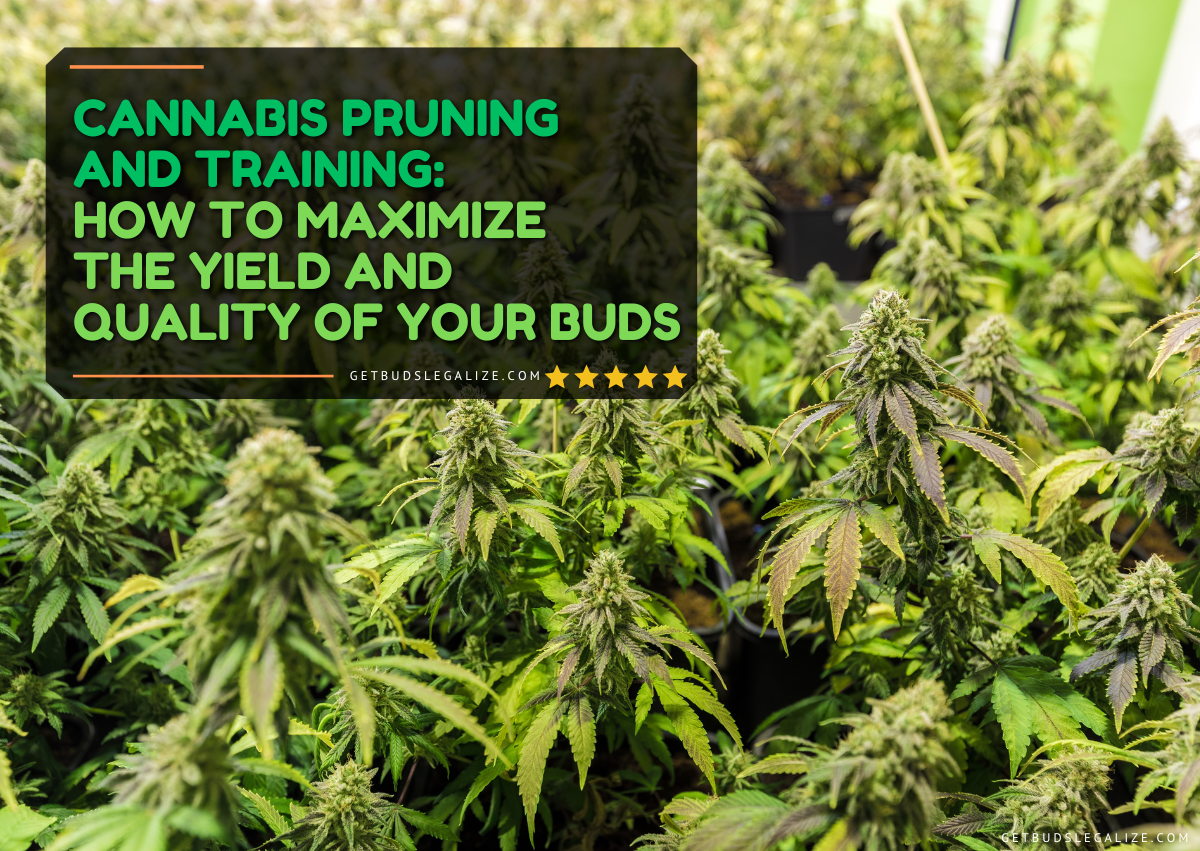


Cannabis Pruning and Training: How to Maximize Yield and Quality of Your Buds
If you are a marijuana grower, you might be wondering how to improve the yield and quality of your buds. One of the most effective ways to do that is by pruning and training your plants.
Pruning and training are techniques that involve manipulating the shape and growth of your plants to optimize their light exposure, airflow, and energy distribution. By doing so, you can increase cannabis yields, enhance their potency, and prevent diseases and pests.
Why Training and Pruning Are Important for Your Cannabis Cultivation?
Marijuana plants naturally grow in a Christmas tree shape, with one main stem and several side branches. This shape is not ideal for indoor growing, as it limits the amount of light that reaches the lower parts of the plant. As a result, the lower buds will be smaller, less dense, and less potent than the upper ones. Moreover, the dense foliage can create a humid environment that favors mold and mildew.
Training and pruning can help you overcome these challenges by creating a more even canopy of buds that receive equal amounts of light and air. This way, you can maximize the use of your grow space and your lighting system, and produce bigger, better, and more uniform buds.
Additionally, training and pruning can help you control the height and width of your plants, which is especially important if you have limited space or need to comply with legal restrictions.
What Are Some of The Best Training and Pruning Techniques for Cannabis?
There are different methods of training cannabis plants, depending on your goals and preferences. Some of the most common ones are:
1. Topping:

Topping is one of the most popular and effective techniques. It involves cutting off the top of the main stem, just above a node where two side branches emerge. This will stimulate the growth of those two branches, creating two main colas instead of one. You can repeat this process several times to create multiple colas and a bushier plant.
Topping can increase the yield and quality of your harvest, as it allows more buds to receive direct light and airflow. It can also reduce the risk of mold and bud rot, as it creates more space between the colas. Topping can also help you manage the height of your plant, which is especially useful if you are growing indoors or in a stealthy way.
The best time to top your plant is when it has at least 4-6 nodes, or when it reaches the desired height. You should use a clean and sharp pair of scissors or a razor blade to make a clean cut. You should also avoid topping your plant too late in the vegetative stage or during the flowering stage, as this can stress your plant and reduce its yield.
2. Fimming:
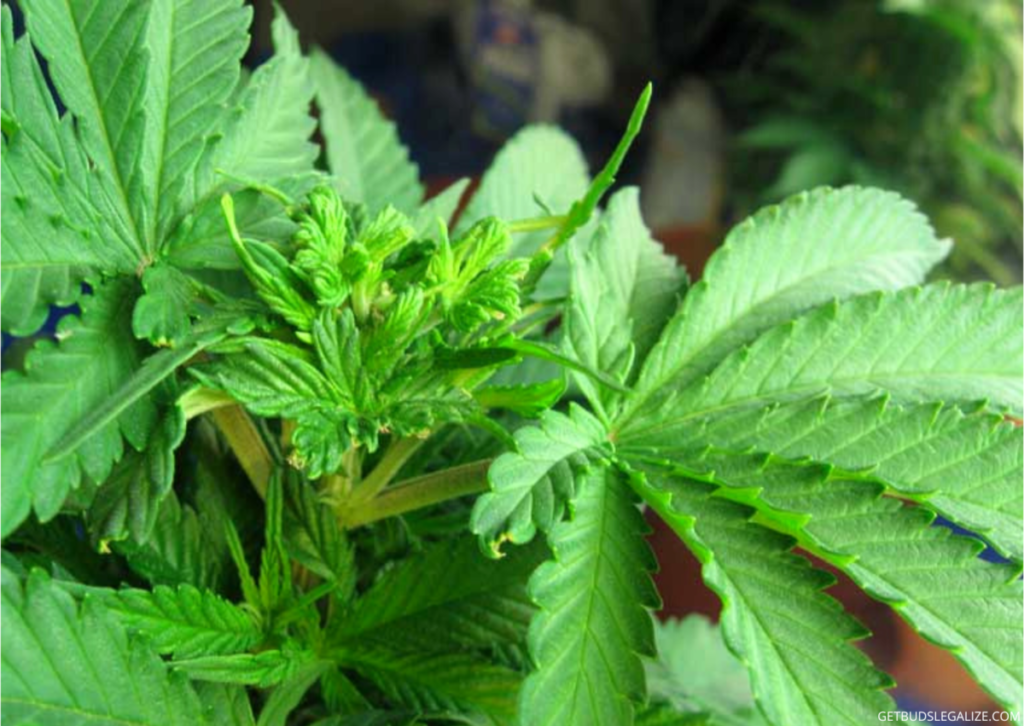
Fimming is another common pruning technique for cannabis, which is similar to topping, but instead of cutting off the entire top of the main stem, you only cut off about 75% of it. This will cause four new colas to grow from the remaining part of the stem, instead of two. Fimming can create more colas than topping, but they might be smaller and less uniform.
Fimming can also increase the yield and quality of your harvest, as it exposes more bud sites to light and airflow. It can also help you create a more horizontal canopy, which can improve light distribution and efficiency. Fimming can also help you control the height and shape of your plant, especially if you combine it with other training techniques such as LST.
The best time to fim your plant is when it has at least 4-6 nodes, or when it reaches the desired height. You should use a clean and sharp pair of scissors or a razor blade to make a clean cut. You should also avoid fimming your plant too late in the vegetative stage or during the flowering stage, as this can stress your plant and reduce its yield.

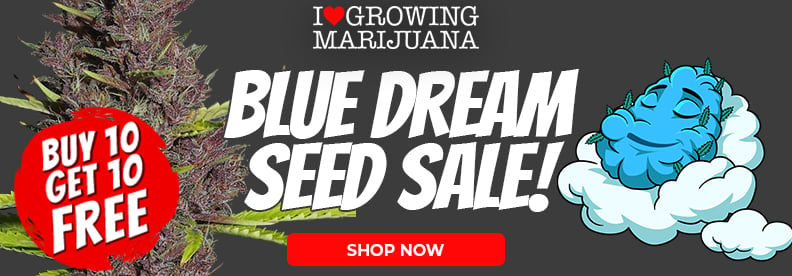
3. Low-Stress Training (LST):
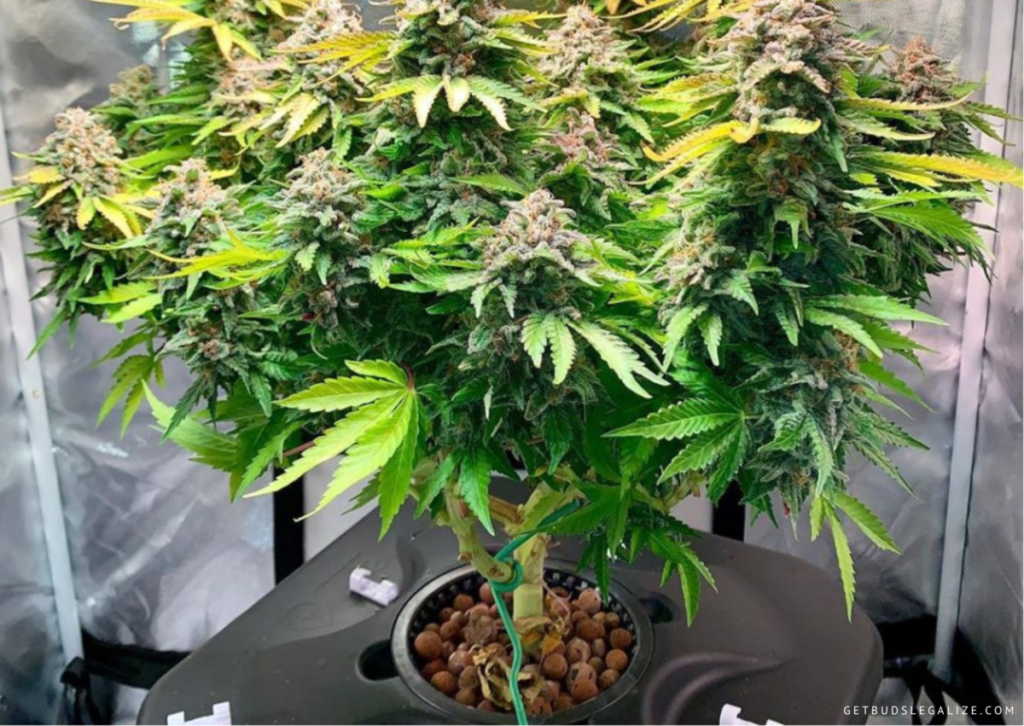
Low-stress training (LST) is one of the most widely used techniques for training cannabis. It involves bending and tying down the branches of your plant to create a more horizontal shape. This will expose more bud sites to light and create a more even canopy. LST can also reduce the height of your plant, which is useful if you have limited vertical space.
LST can improve the yield and quality of your harvest, as it allows more buds to receive direct light and airflow. It can also reduce the risk of mold and bud rot, as it creates more space between the colas. LST can also help you prevent light burns, nutrient deficiencies, and pests, as it improves light penetration and circulation in your growing space.
The best time to start LST is when your plant has at least 3-4 nodes, or when it is strong enough to withstand bending. You should use soft ties or wires to gently bend and secure the branches to the pot rim or stakes. You should also adjust the ties regularly to maintain an optimal shape and avoid damaging the branches.
4. Mainlining:
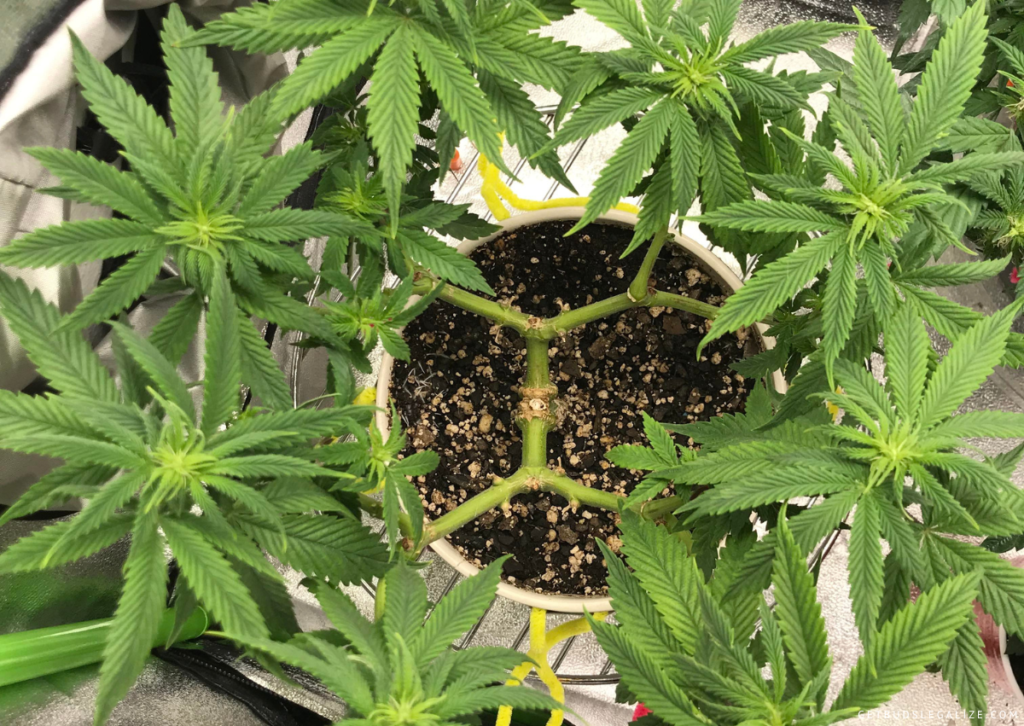
Mainlining is an advanced technique for training cannabis, which involves creating a symmetrical network of colas from a single stem. It requires topping your plant multiple times until you have 8-16 main branches that grow from an even base. You then tie down these branches horizontally to create a flat canopy.
Mainlining can produce impressive results in terms of yield and quality, as it creates a uniform distribution of colas that receive equal amounts of light and nutrients. It can also help you optimize the use of your grow space, as it creates a compact and efficient structure that maximizes light exposure and minimizes waste.
The best time to start mainlining is when your plant has at least 6 nodes, or when it reaches the desired height. You should use a clean and sharp pair of scissors or a razor blade to make clean cuts. You should also use soft ties or wires to gently bend and secure the branches to the pot rim or stakes. You should also monitor the growth of your plant and remove any unwanted branches or leaves that might interfere with the main colas.
5. Defoliation:
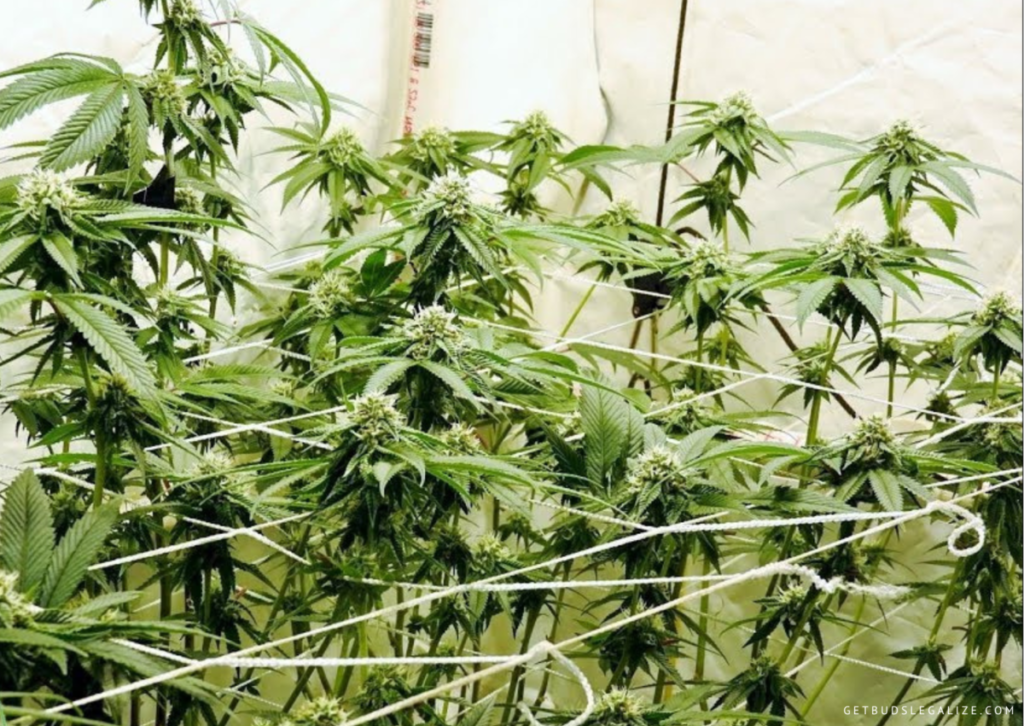
Defoliation is another common pruning technique for cannabis. It involves removing some of the fan leaves from your plant, especially the ones that are blocking light from reaching the lower buds. This can improve the light penetration and airflow in your canopy, resulting in bigger and denser buds. It can also reduce the risk of pests and diseases, as it removes potential hiding places for them.
Defoliation can be done throughout the vegetative and flowering stages, but it should be done carefully and moderately. You should only remove the leaves that are not essential for photosynthesis, and avoid cutting off too many leaves at once. You should also avoid defoliating your plant during the first few weeks of flowering, as this can stress your plant and affect its development.
The best way to defoliate your plant is to use a clean and sharp pair of scissors or a razor blade to cut off the leaves at their base. You should also inspect your plant regularly and remove any dead, yellow, or damaged leaves.


6. Lollipopping:
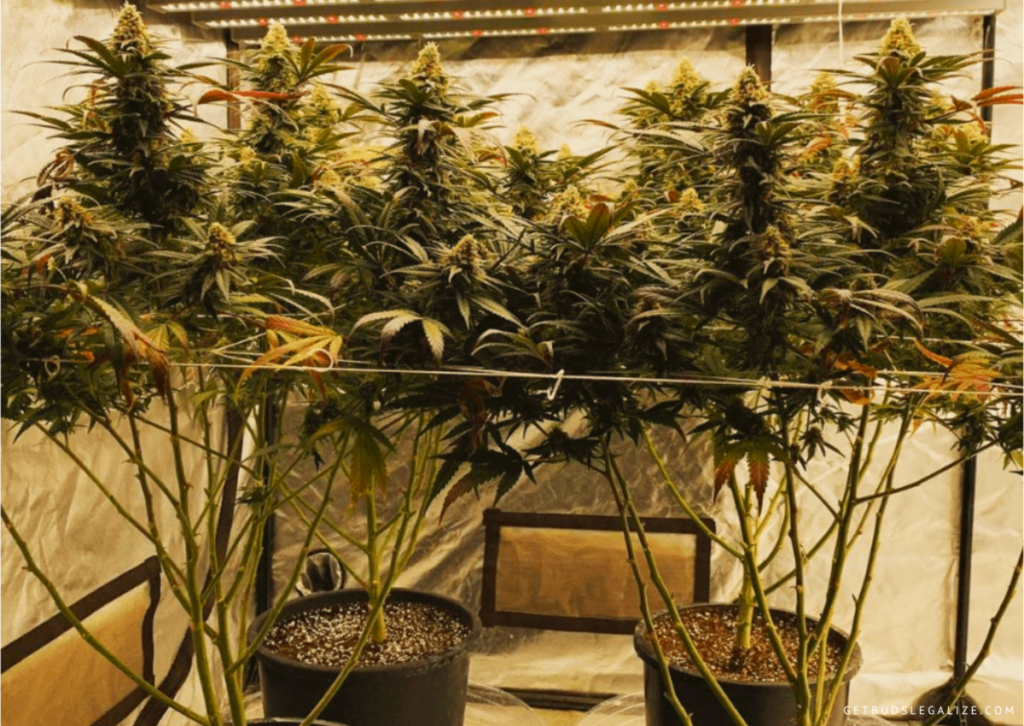
Lollipopping is a pruning technique that involves removing all the lower leaves and branches from your plant, leaving only the top colas. This will create a lollipop-like shape, with a bare stem and a dense canopy. The idea behind this technique is to focus the energy and resources of your plant on the top buds, which are usually the biggest and most potent ones.
Lollipopping can increase the quality and efficiency of your harvest, as it eliminates the popcorn buds that are usually small, airy, and low in THC. It can also improve the airflow and light distribution in your canopy, reducing the risk of mold and bud rot. Lollipopping can also make harvesting easier, as you will have fewer branches to trim.
The best time to lollipop your plant is during the late vegetative stage or the early flowering stage before the buds start to form. You should use a clean and sharp pair of scissors or a razor blade to cut off the lower branches and leaves at their base. You should also leave some leaves on the top colas, as they are important for photosynthesis.
7. Super cropping:
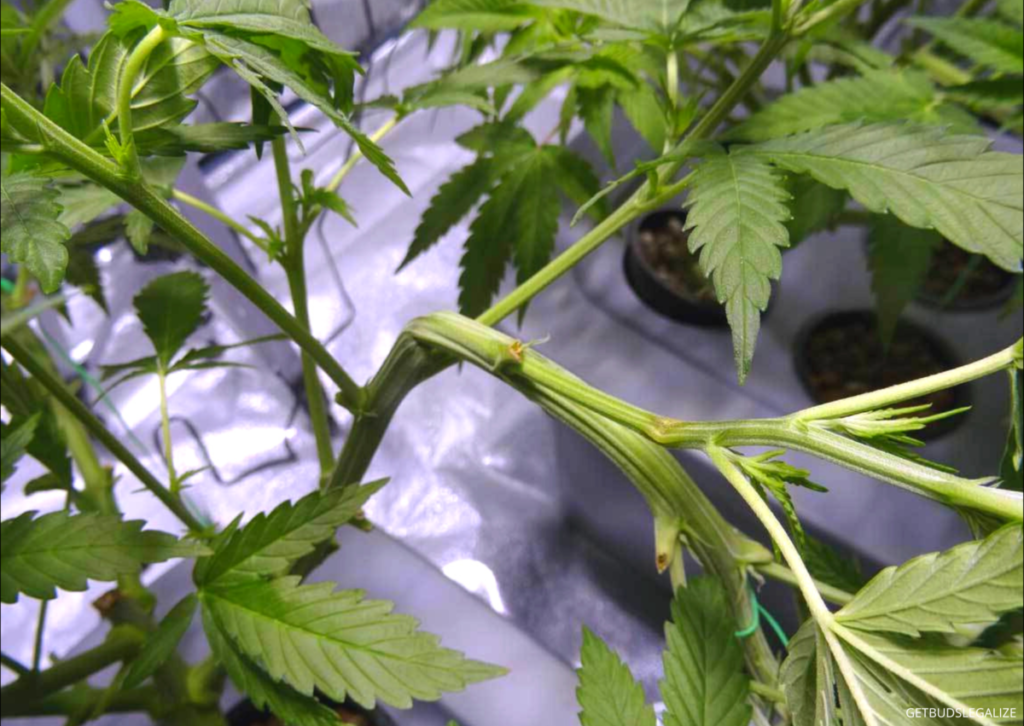
Super-cropping is a plant training technique that involves bending and pinching the stems of your plant, creating small breaks or kinks in them. This will cause your plant to produce more hormones and nutrients to heal itself, resulting in stronger and thicker stems. It will also create multiple bud sites along the bent stems, increasing the yield and quality of your harvest.
Super-cropping can also help you control the height and shape of your plant, creating a more even canopy that can receive more light and airflow. It can also increase the potency and flavor of your buds, as it stresses your plant and stimulates its resin production.
The best time to super crop your plant is during the vegetative stage or the early flowering stage before the buds start to harden. You should use your fingers to gently bend and squeeze the stems until you hear a soft snap or feel a slight resistance. You should also support the bent stems with stakes or ties, to prevent them from breaking or falling over.
What Is The Best Way to Combine Those Techniques to Achieve A Better Outcome?
There is no definitive answer to this question, as different techniques may work better for different strains, environments, and preferences. However, here are some general tips on how to combine pruning and training for cannabis:
- Start with topping or fimming your plants early in the vegetative stage, to create multiple main colas and increase your yield potential.
- Use LST or mainlining to spread out your branches and create an even canopy that receives optimal light exposure.
- Use defoliation sparingly to remove any leaves that block light or airflow to your buds.
- Use lollipopping to remove any lower branches or buds that are not worth keeping.
- Use super-cropping to strengthen your stems and boost your bud quality.
- Experiment with different combinations and see what works best for you and your plants.


When Should Avoid Prune or Training My Cannabis Plants?
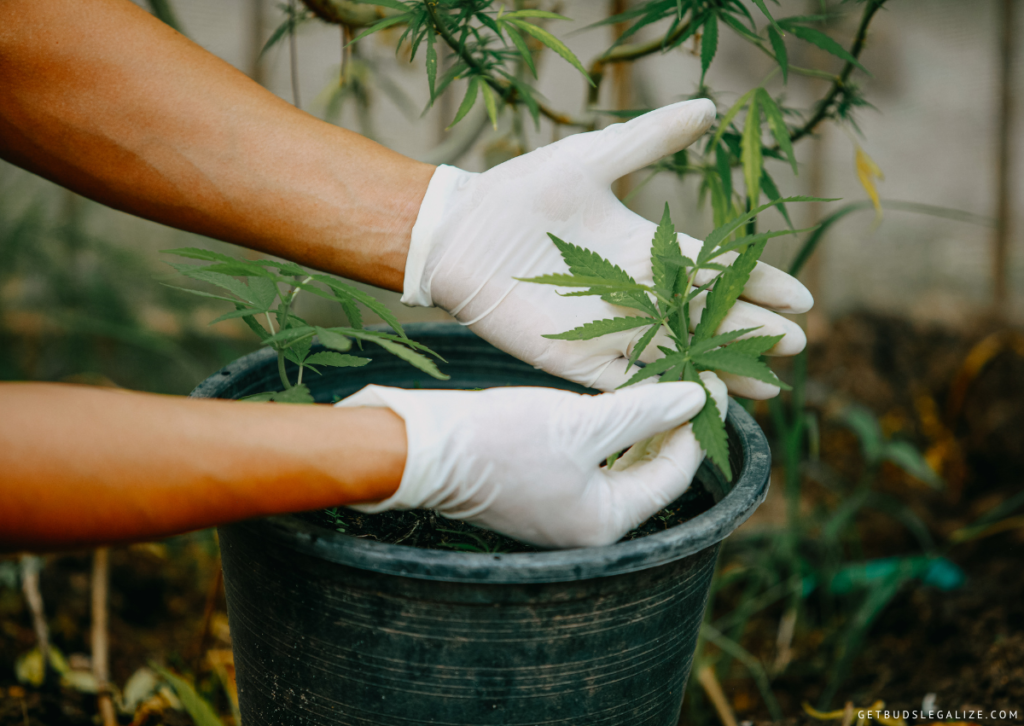
You should avoid pruning or training when your plants are too young, too old, or too stressed.
https://getbudslegalize.com/cannabis-pruning-and-training-to-boost-yield/
Commenti
Posta un commento